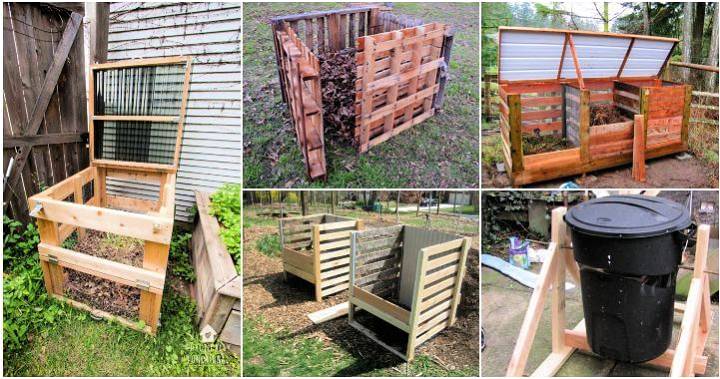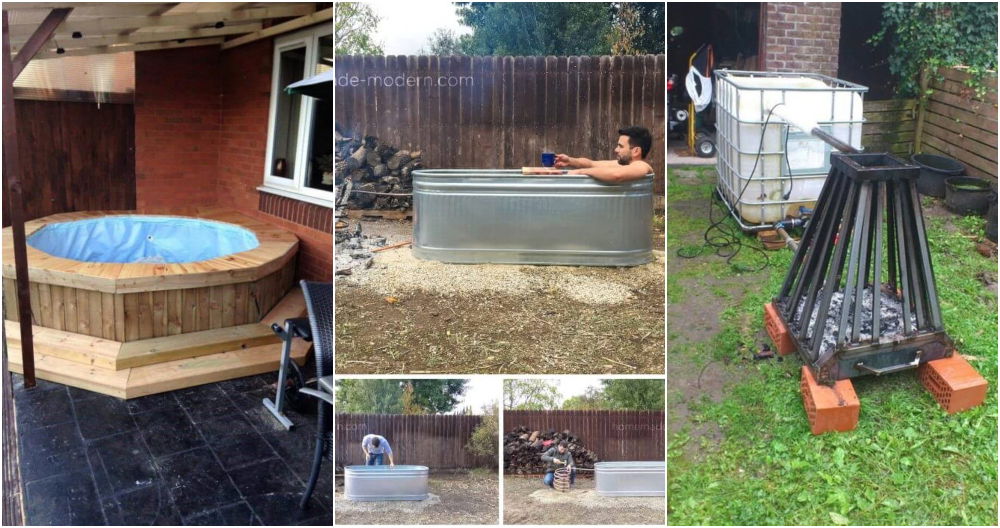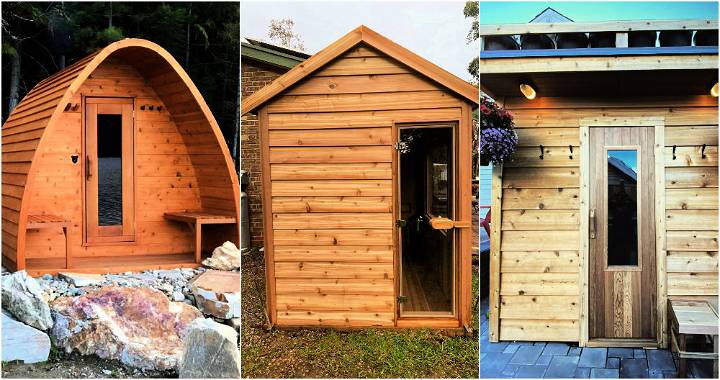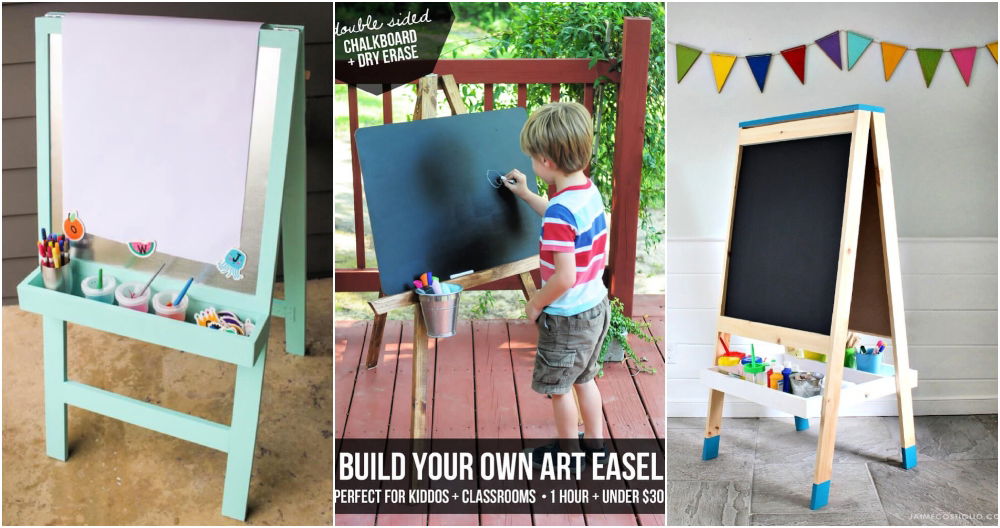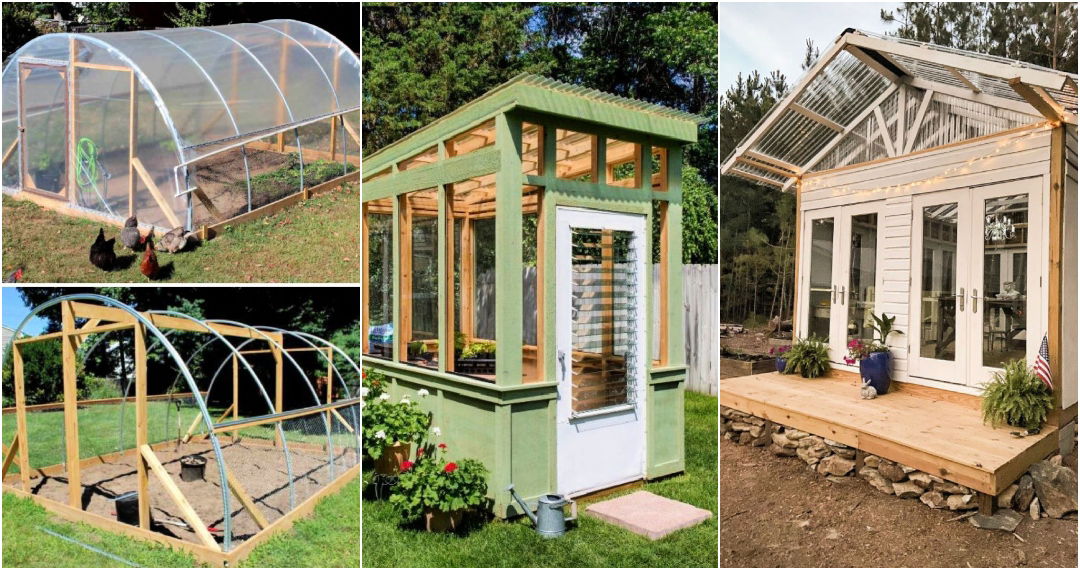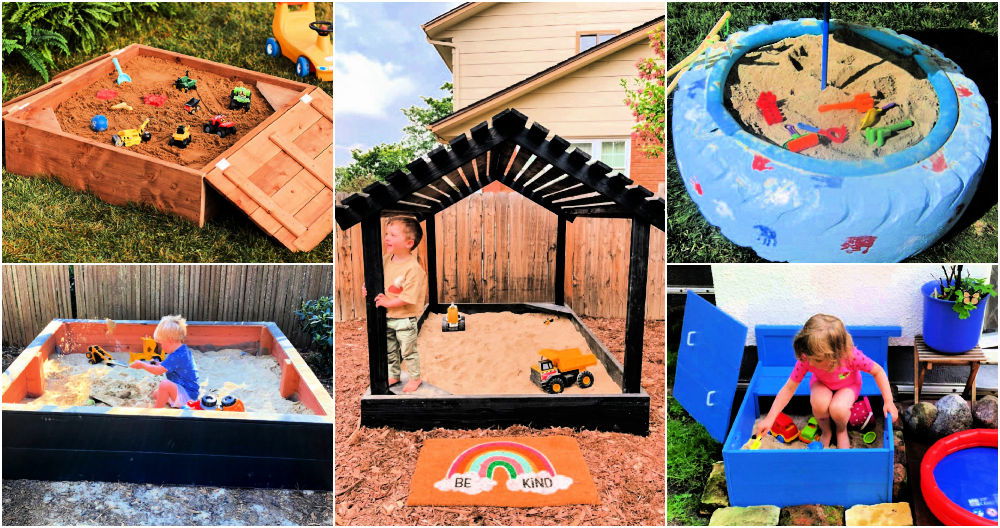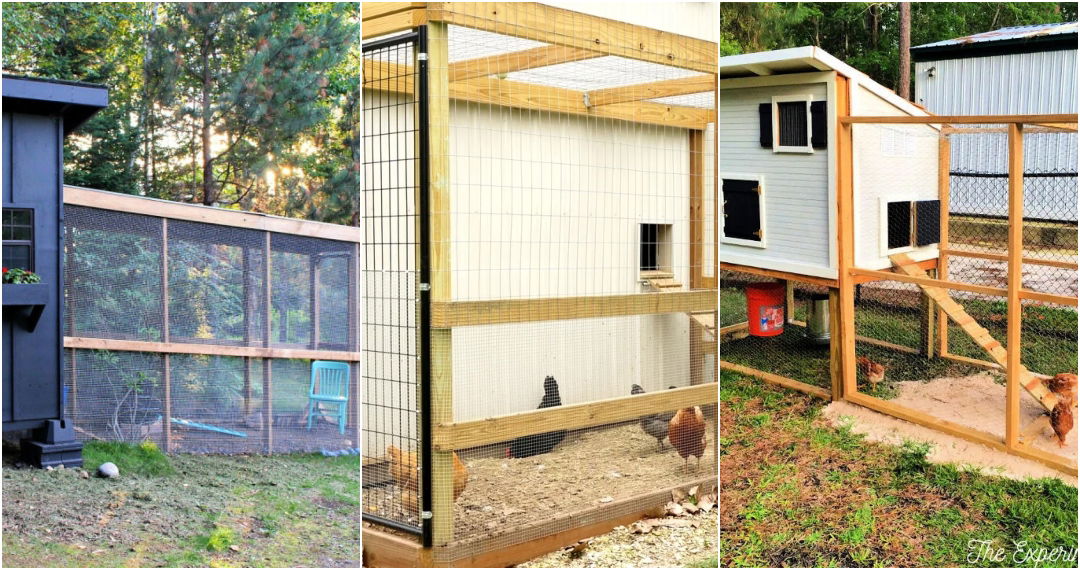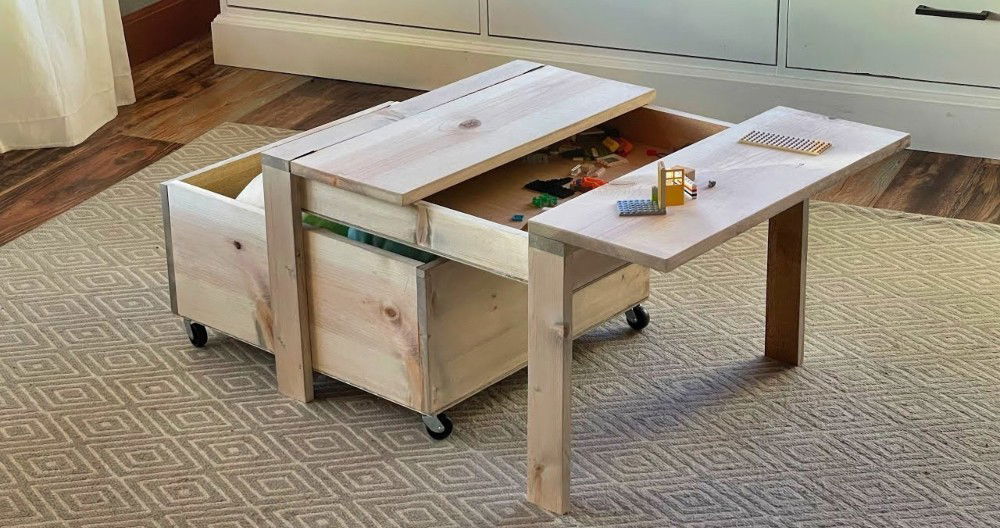Making a DIY dust collector can be a game-changer for maintaining a clean and safe workshop environment. With 25 homemade dust collector plans to choose from, finding the right fit for your space and skills is easier than ever. These guides are crafted to help you construct a system that efficiently manages sawdust and debris, enhancing your working conditions and safeguarding your health.
Understanding how to make a dust collector from scratch not only saves you money but also customizes the tool to meet your specific needs. Our step-by-step plans are tailored to guide you through the process, ensuring you have all the necessary information and resources at your fingertips. Whether dealing with small or significant volumes of dust, our collection has got you covered. Now, let's delve into why building your own dust collector is a wise choice and how you can successfully complete this rewarding project.

Why Build a DIY Dust Collector?
Building a DIY dust collector is a wise decision for several reasons. It not only benefits your health but also enhances the efficiency and cleanliness of your workspace. Let's dive into the key reasons why opting for a homemade dust collection system is a great choice:
- Health Protection: Sawdust and fine particles can pose serious health risks, particularly to your respiratory system. By effectively capturing dust, you ensure a cleaner air quality, protecting your lungs from potential harm.
- Workspace Cleanliness: A dust-free environment means a tidier and more organized workspace. This leads to a more pleasant and productive working area, where tools and materials are easier to find, and surfaces are ready for immediate use.
- Cost-Effectiveness: Commercial dust collectors can be expensive. A DIY version allows you to make an efficient system at a fraction of the price. With readily available materials and a bit of elbow grease, you can build a custom solution tailored to your specific needs.
- Customization: Every workshop is unique. Designing your own dust collector means you can tailor it to fit your space perfectly. Whether you need a compact system for a small shop or a more robust setup for larger debris, the customization options are endless.
- Learning and Satisfaction: Taking on a DIY project like this not only broadens your skills but also brings a sense of accomplishment. There’s a unique satisfaction in using something you’ve built with your own hands, especially when it significantly improves your working environment.
Making a DIY dust collector is a practical, rewarding, and cost-effective way to enhance your woodworking experience.
How to Make a Dust Collector
Whether you're a DIY enthusiast or a professional woodworker, a cyclone dust collector can be a valuable addition to your workshop. It keeps your space clean and ensures your vacuum filter lasts longer. This guide, inspired by a thorough video tutorial by Chris Notap, walks you through making an efficient and cost-effective cyclone dust collector using everyday items.
What You'll Need:
- Two Home Depot buckets
- Three 1.5-inch straight couplers
- One 90-degree 1.5-inch fitting
- One 45-degree 1.5-inch fitting
- Three short lengths of 1.5-inch pipe (1 and 3/8 inches long)
- Two 2-inch flexible pipe caps
- One small sheet metal screw
- Jigsaw or oscillating saw
- Utility knife
- Drill with a stepper drill bit
- Tin snips
Step-by-Step Guide:
- Prepare the Buckets: Start by removing the handle from the first bucket. Use a jigsaw or an oscillating saw to cut off the top section just underneath the first ring. This makes a podium-like structure.
- Smooth the Edges: With a utility knife, carefully remove any burrs from the inside and outside edges of the cut. Achieve a smooth finish by running the knife around the bucket multiple times.
- Make a Seal: Place the cut part of the first bucket on top of the second bucket. Press down firmly. The tapered design of the buckets should naturally make a tight seal without additional materials.
- Drill Inlet and Outlet Holes: In the bottom of the bucket, identify a low spot. Mark and drill two holes here for the inlet and outlet. These holes should be slightly smaller than the diameter of your 1.5-inch pipes for a snug fit.
- Install the Couplers and Pipes: Insert the short lengths of 1.5-inch pipe into the couplers, then fit these into the holes you've drilled. You might need to use tin snips for adjustment. Ensure a tight fit; no glue is needed.
- Attach the Fittings: Connect the 90-degree and 45-degree fittings, slightly offset as discussed. This small adjustment helps direct the dust downwards. Attach this assembly to the pipes installed in the bottom bucket, with the 45-degree fitting resting against the bucket's side.
- Secure the Fittings: Once positioned correctly, secure the 45-degree fitting to the bucket's side with a small screw for stability.
- Connect the Vacuum Hose: Modify the flexible pipe caps to fit the end of your vacuum hose. A Dremel tool can help you achieve the right size. These rubber caps ensure a tight seal. Tighten with a gear clamp for extra security.
- Final Assembly: Attach your shop vac hose to the central fitting in your cyclone dust collector. Ensure everything is firmly connected and sealed.
Testing Your Cyclone Dust Collector:
- With your setup complete, it's time to test the efficiency of your homemade cyclone dust collector.
- Suck up a significant amount of sawdust and observe how much dust ends up in the vacuum itself.
- Ideally, the lower bucket will collect most of the sawdust, keeping your vacuum clean and extending the filter's life.
Video Tutorial
For a visual guide on making this simple cyclone dust collector, watch the step-by-step video tutorial by Chris Notap. Watch it here.
It pairs well with this written guide by showing the described techniques in action, making the creation process easier to understand and follow.
Making a DIY cyclone dust collector is not just a cost-effective solution but also an efficient way to keep your workspace clean. Following these steps will help you build a functional dust collector that enhances your workshop's cleanliness and efficiency.
Safety Precautions and Gear
Ensuring safety is paramount when setting up or working with dust collection systems. Before diving into the construction or operation of your DIY dust collector, it's crucial to understand and adhere to safety measures. Protecting yourself from potential hazards will make your workshop safer and more enjoyable.
Personal Protective Equipment (PPE)
- Dust Masks: Always wear a high-quality dust mask or respirator. Fine dust particles can be harmful if inhaled and can cause long-term respiratory issues. Ensure the mask fits snugly and is rated for fine particulates.
- Safety Goggles: Protect your eyes from dust and debris. Opt for goggles that seal around your eyes to prevent particles from entering. Regular glasses aren't sufficient as dust can easily bypass them.
- Ear Protection: Depending on the noise level of your dust collector and other tools, ear protection such as earplugs or earmuffs might be necessary. Prolonged exposure to high decibel levels can lead to hearing loss.
Safety Guidelines for Your DIY Dust Collector
- Electrical Safety: Ensure all electrical components are properly insulated and grounded. DIY projects often involve adapting motors and other parts, so double-check their safety ratings and compatibility.
- Proper Ventilation: Make sure your workshop is well-ventilated. Even with a dust collector, some particles will remain airborne. Good airflow helps to reduce your exposure to fine dust.
- Regular Maintenance: Keep your dust collector in top condition. Check for and repair any leaks, clogs, or damaged parts regularly. A well-maintained system is safer and more efficient.
- Avoid Overloading: Do not exceed the capacity of your dust collector. Overloading the system can lead to malfunctions or even fires. Be mindful of the volume of dust and debris your collector can handle.
- Stay Informed: Always be on the lookout for new safety practices and equipment upgrades. The field of DIY and woodworking is continually evolving, and staying informed helps enhance your safety.
Making a DIY dust collector enhances workspace cleanliness and air quality. Prioritize safety with proper gear, following guidelines, and respecting tools. Your health is priceless.
Choosing the Right Filter Media for Your Dust Collector
Selecting the ideal filter media for your dust collector is pivotal in ensuring a clean, safe, and efficient workspace. Different materials and projects produce varying types of dust, each requiring a specific filtration approach. Below, we discuss the common types of filter media, including paper filters, HEPA filters, and washable filters, along with their advantages and disadvantages. This guide will help you make an informed decision based on the kind of dust generated in your environment.
Paper Filters
Pros:
- Cost-Effective: Paper filters are usually the most affordable option, making them an attractive choice for hobbyists and small workshops.
- Good for General Use: They are efficient for capturing larger dust particles, such as those produced by wood.
Cons:
- Limited Lifespan: Paper filters tend to clog faster and need more frequent replacement than other types.
- Not Ideal for Fine Dust: They may not capture very fine particles effectively, posing a risk when working with materials like MDF or hard metals.
HEPA Filters
Pros:
- High Efficiency: HEPA (High-Efficiency Particulate Air) filters can capture 99.97% of particles as small as 0.3 microns, making them excellent for fine dust.
- Health Safety: They're highly recommended when dealing with toxic dusts, such as certain types of metal dust or chemicals, ensuring a safer breathing environment.
Cons:
- Cost: HEPA filters are more expensive upfront than other types.
- Maintenance: They may require more frequent checks to ensure they are not clogged and functioning properly.
Washable Filters
Pros:
- Reusable: These filters can be cleaned and reused, potentially offering savings over time.
- Eco-Friendly: Reduces waste, as you're not throwing away used filters.
Cons:
- Not for All Dust Types: May not be suitable for very fine or hazardous dust, as washing might not remove all particles completely.
- Maintenance Effort: Requires a commitment to regularly clean the filters to maintain efficiency.
Recommendations Based on Dust Type
- Wood Dust: Paper filters can be a cost-effective option for larger particles from sawdust. However, if working frequently or with finer wood particles, considering a HEPA filter might be beneficial for health reasons.
- Metal Dust: Due to the potentially toxic nature of metal filings and the fine size of these particles, HEPA filters are highly recommended.
- General Workshop Dust: If your work varies or includes a bit of everything, a HEPA filter offers the most versatility and safety. However, for less fine dust and more sporadic use, a paper or washable filter might suffice.
Choose filter media based on materials and dust size. Safety first - use HEPA for fine or hazardous dust. Paper or washable filters work for larger particles. Match dust collection system to workspace for cleanliness.
Maintaining Your DIY Dust Collector
Keeping your DIY dust collector in top shape is essential for ensuring it operates efficiently, keeps your workspace clean, and maintains air quality. Regular maintenance and cleaning not only extend the life of your dust collector but also prevent potential malfunctions or hazards. Follow this straightforward schedule and set of tips to keep your system running smoothly.
Filter Maintenance
Check Filters Regularly: The filters are the heart of your dust collector. Inspect them monthly for clogs, damage, or wear. A simple inspection can help you catch issues before they escalate.
Cleaning the Filters: Depending on the type of filter your system uses, you can either shake out the dust or use compressed air to blow it out. Do this outside to prevent dust from resettling in your workspace.
Replacement Schedule: Filters don’t last forever. Even with diligent cleaning, they will eventually wear out. Typically, replacing filters annually is a good rule of thumb, but this can vary based on how frequently you use your dust collector and the volume of dust it handles.
Collection Bin Management
Regular Emptying: The frequency with which you should empty the collection bin depends on your project load. As a general guideline, aim to check the bin every week. Don't wait until it's full to empty it, as an overly full bin can hamper the efficiency of your system.
Seal Properly: After emptying, ensure the bin is sealed correctly. A poor seal can lead to dust leakage and reduce the overall suction power of the collector.
Hoses and Connections Inspection
Monthly Checks: Examine hoses and connections at least once a month for signs of wear or damage, such as cracks or loose fittings. These are the lifelines of your dust collection system; any breach can significantly impact performance.
Tighten and Replace as Needed: Should you find any loose connections, tighten them immediately. Replace damaged hoses to prevent any dust escape or suction loss.
Keeping the Exterior Clean
Wipe Down Surfaces: Dust can settle on the exterior surfaces of your dust collector. A monthly wipe-down with a damp cloth will keep it looking good and prevent dust from entering the machine from outside.
A Final Note on Safety
Always disconnect your dust collector from its power source before performing any maintenance or cleaning tasks. Safety first is a rule that never gets old, especially when working with DIY equipment.
By adhering to this maintenance and cleaning schedule, you’ll ensure that your DIY dust collector remains an effective and reliable part of your workshop for years to come.
Regular upkeep not only safeguards the machine but also protects you, your work, and your workspace from the hazards of dust accumulation.
Understanding Noise Reduction for Dust Collectors
When setting up a dust collection system, an important aspect to consider is the noise generated by the equipment. Loud dust collectors can not only be a nuisance but also pose health risks due to prolonged exposure to high decibel levels. Implementing noise reduction techniques can significantly improve the work environment. Below, we explore practical methods to minimize noise without compromising the efficiency of your dust collector.
Employing Soundproofing Materials
Sound Absorption: Encasing the dust collector in a room or cabinet lined with sound-absorbing materials can dramatically reduce noise levels. Materials such as mass-loaded vinyl, acoustic foam, or even heavy-duty moving blankets are effective in absorbing sound vibrations.
Barrier Creation: Erecting barriers using dense materials can block the sound path from the dust collector to the work area. Plywood, MDF panels, or specialized soundproofing panels can serve as excellent barriers.
Strategic Collector Placement
Distance Matters: Simply locating the dust collector as far away as possible from work areas can significantly reduce the noise impact. Consider placing the collector in a separate room or an isolated area of the workshop.
Elevation: Mounting the dust collector off the ground can also help. Vibration noise through the floor can be minimized using anti-vibration mounts or pads, which absorb the vibrations before they can spread.
Adding Mufflers to the Exhaust
Exhaust Mufflers: Similar to automotive mufflers, exhaust mufflers for dust collectors can dramatically reduce the noise emitted. These devices work by dissipating sound energy as it passes through, without hindering the performance of the dust collection system.
Custom Solutions: For a more DIY approach, creating a muffler box lined with sound-absorbing materials around the exhaust outlet can be a cost-effective solution. Ensure there’s adequate airflow to prevent overheating.
Ensuring Proper Maintenance
A well-maintained dust collector is a quieter one. Regular checks and maintenance can prevent noise from escalating due to reasons such as:
- Clogged Filters: Clean or replace them as recommended by the manufacturer.
- Loose Components: Tighten any loose screws or fittings to avoid rattling noises.
- Worn Parts: Replace any worn-out parts that might be causing undue noise.
Reduce dust collector noise with soundproofing, placement, maintenance for safer work environment while keeping efficiency.
Creative Upcycling Ideas for Your DIY Dust Collector
Building a DIY dust collector doesn't just improve the air quality in your workshop; it's also an excellent opportunity to get creative with upcycling. Repurposing materials not only makes your project more eco-friendly but can also add a unique touch and save money. Here are some clever ideas to help you transform common items into essential parts of your dust collector system.
Utilizing Old Plastic Drums
Convert into a Dust Collection Barrel:
An old plastic drum can be the perfect container for your dust collector. It's sturdy, has a large capacity, and is relatively easy to modify.
- Step 1: Clean the drum thoroughly to remove any residues that could interfere with your project.
- Step 2: Cut an opening on the top to fit your system's inlet pipe. Ensure the seal around this connection is as airtight as possible.
- Step 3: Consider adding a viewing window using a piece of clear acrylic. This allows you to monitor the dust level without opening the drum.
Repurposing PVC Pipes
Create a Customized Ductwork System:
PVC pipes, often used for plumbing, can be repurposed to create an efficient network for your dust collection system.
- Design Your Layout: Plan the layout of your workshop and where each tool is located. This helps in determining the most efficient path for your ductwork.
- Installation: Attach the PVC pipes from your dust collector to each tool. Ensure all connections are secure and airtight to maintain suction power.
- Flexible Connections: For tools that move or change positions, consider using flexible hose sections between the PVC pipes and the machines.
Tips for Better Efficiency and Sustainability
- Seal Gaps: Use silicone caulk or foam tape to seal any gaps in connections. This improves suction and prevents dust from escaping.
- Clean Regularly: Ensure your upcycled dust collector components are easy to disassemble for cleaning. Regular maintenance keeps your system efficient.
- Monitor Air Flow: Experiment with different configurations to find the most effective setup. Sometimes, the path with the least resistance is not the most obvious one.
By repurposing materials like old plastic drums and PVC pipes, you not only save money but also contribute to a more sustainable environment. Your DIY dust collector becomes a statement of creativity and eco-consciousness in your workshop.
Customizing Your DIY Dust Collector for Specific Tools
Making a dust collector that can adapt to various woodworking tools like table saws, routers, and bandsaws not only keeps your workspace clean but also ensures your tools run more efficiently and last longer. Here’s how you can customize your DIY dust collector setup for different tools, with easy-to-understand instructions.
Table Saw Dust Collection
Connecting to the Table Saw:
- Measure the Dust Port: Start by measuring the dust port of your table saw. Most table saws have a 2.5-inch or 4-inch port. Knowing the size is crucial for creating an effective connection.
- Hose Adapter: If your dust collector hose doesn’t fit the table saw’s dust port, use an adapter. These are readily available at hardware stores. Ensure a snug fit to prevent any dust leaks.
- Enclose the Base: Many table saws have an open base which allows dust to escape. Creating a simple wooden box or panel to enclose the base will help contain the dust. Just make sure to leave an opening for the dust collection hose.
- Seal Gaps: Use foam tape or silicone caulk to seal any gaps around the enclosure and where the hose connects to the saw. This ensures that the dust is sucked into the collector.
Router Table Dust Collection
Customizing for the Router Table:
- Above-the-Table Dust Collection: For capturing dust from above the table, consider attaching a dust collection hood to the fence. This can be as simple as a plastic hood connected to a flexible hose, leading back to your main dust collector.
- Below-the-Table Dust Collection: To catch the dust from below, you can enclose the base of your router table similar to the table saw method. Ensure there's a port to connect your dust collector hose.
- Ensure Tight Connections: As with the table saw, make sure all connections are tight and sealed to prevent dust from escaping.
Bandsaw Dust Collection
Optimizing Dust Collection for the Bandsaw:
- Lower Wheel Housing: Start by connecting a hose to the lower wheel housing. This is where most of the dust is generated. If your bandsaw doesn’t have a dedicated port, you might need to create an enclosure around the housing and fit a port yourself.
- Blade Guard Dust Port: Some bandsaws come with or allow for an aftermarket dust port near the blade guard. Connecting a small hose here can help capture the dust that escapes upwards during cutting.
- Keep Hoses Clear: Ensure the hoses do not interfere with the operation of the bandsaw or its safety features.
General Tips
- Flexible Hoses: Use flexible hoses wherever possible. They make it easier to move tools around and adjust to different setups.
- Quick-Release Clamps: These clamps can make switching your dust collection hose between tools quick and easy.
- Regular Maintenance: Keep your dust collection system clean and check for any leaks or damage regularly to ensure it operates at peak efficiency.
Adapting DIY dust collector to tools ensures cleanliness and efficiency. Maximize effectiveness by securing connections and sealing gaps.
Remote Control and Automation for Dust Collectors
In the realm of DIY projects, adding remote control and automation features to your dust collector can significantly enhance convenience and efficiency. Here's how you can upgrade your system.
Remote Control Options
Smart Plugs: By plugging your dust collector into a smart plug, you gain the ability to control it remotely via a smartphone app. This simple addition allows you to turn your dust collector on or off from anywhere within the range of your Wi-Fi network. It's an easy and cost-effective solution.
Timers: For those who prefer a set schedule, integrating a timer can automate your dust collector's operation times. This is particularly useful in workshop environments where work hours are consistent. Timers prevent the system from running unnecessarily, thus saving energy.
Wireless Remote Controls: These remote controls are specifically designed for workshop equipment like dust collectors. They come with a key fob transmitter that you can carry around, allowing you to activate the system with the push of a button. This option is ideal for large workshops where the dust collector might be situated far from the work area.
Automation via Smartphone Apps
Integration with Smart Home Devices: Some smart plugs and switches are compatible with smart home ecosystems like Google Home or Amazon Alexa. By integrating your dust collector into these systems, you can control it using voice commands or through the ecosystem's app, providing an additional layer of convenience.
Custom Automation Solutions: For the tech-savvy DIYer, custom solutions using platforms like IFTTT (If This Then That) or Arduino can be developed. These platforms allow for the creation of custom triggers, such as turning on the dust collector when a specific workshop light is activated, offering a highly personalized automation experience.
Incorporating remote control and automation can enhance woodworking efficiency. Various options available for every skill level. Always prioritize safety.
Troubleshooting Common Issues with DIY Dust Collectors
When using a DIY dust collector, you might face several common issues, such as clogs, leaks, or insufficient suction. Here's how to troubleshoot and solve these problems, ensuring your system operates efficiently.
Clogs in the System
Symptoms: Reduced suction power, unusual noises, or visible dust build-up.
Solutions:
- Inspect and Clean Filters: Begin by checking the filters. If they're clogged with dust, clean or replace them according to the manufacturer's instructions.
- Check the Ductwork: Look for blockages in the ducts. Remove any debris or dust build-up using a long, flexible brush or a vacuum with a hose attachment.
- Examine the Dust Collection Points: Ensure no large pieces of debris are blocking the collection points. Regularly clean these areas to prevent future clogs.
Leaks in the Ductwork
Symptoms: Loss of suction power, visible dust outside the ducts.
Solutions:
- Identify the Leak: Run your hand along the ductwork to feel for air escaping. For hard-to-reach areas, use a smoke pen or incense stick to visually locate leaks.
- Seal the Leaks: Use duct tape or a sealant designed for HVAC systems to seal any leaks. Ensure the surface is clean and dry before applying.
- Regular Inspections: Periodically inspect your ductwork for any signs of wear and tear, and address leaks immediately.
Insufficient Suction
Symptoms: Dust not being effectively collected, slow collection rate.
Solutions:
- Check for Open Ports: Ensure that all unused ports on your dust collector are closed or capped. Open ports can significantly reduce suction power.
- Inspect the Motor and Fan: A malfunctioning motor or fan can lead to insufficient suction. If the motor is overheating or the fan blades are damaged, repairs or replacements may be necessary.
- Evaluate System Design: If the problem persists, consider whether your system is appropriately sized for your needs. You might need a more powerful motor or a different fan design to handle the volume of dust being produced.
Preventative Maintenance
- Regularly Empty the Dust Bin: Don't wait for the bin to be full before emptying it, as this can affect suction power.
- Clean Filters Frequently: Even if they don't appear to be fully clogged, regular cleaning helps maintain airflow.
- Conduct Periodic Inspections: Regularly check the entire system for wear and tear, especially the moving parts.
By following these troubleshooting steps and solutions, you can address the most common issues faced by DIY dust collector users. Regular maintenance and prompt attention to any signs of trouble can prevent most problems from becoming serious.
FAQs on DIY Dust Collector Plans
Making your own dust collector can be a rewarding project that enhances the cleanliness and efficiency of your workspace. Here are answers to some commonly asked questions about DIY dust collector plans.
What materials do I need to build a DIY dust collector?
The materials you need can vary depending on the type of dust collector you're planning to build. Generally, you might need:
- Buckets or a trash can for a cyclone dust collector
- PVC pipes and fittings
- Flexible hose
- A shop vac or blower motor
- Plywood or MDF for building enclosures or supports
- Sealants like silicone or foam gasket for airtight connections
Can I build a dust collector without advanced tools?
Yes, many DIY dust collector plans are designed with simplicity in mind, requiring only basic hand tools and perhaps a few power tools like a drill and a saw. It's always important to choose a plan that matches your skill level and the tools you have available.
How do I choose the right size dust collector for my workshop?
The size of the dust collector you need depends on several factors:
- The size of your workspace
- The number and type of machines you need to connect
- Your typical workflow and dust production
For smaller workshops, a simple shop vac with a dust separator might be sufficient. Larger spaces or more heavy-duty work will benefit from a more powerful system with a larger capacity.
Can a DIY dust collector be as effective as a commercial one?
While commercial dust collectors are designed for heavy-duty use and optimized for efficiency, a well-built DIY dust collector can be surprisingly effective for most hobbyist and small workshop needs. The key is to ensure it is properly designed and sized for your specific situation.
How often should I empty the dust collector?
This varies depending on how much dust your woodworking projects generate and the capacity of your dust collector. It's a good practice to check the collector before starting a new project and empty it as needed to maintain efficiency and prevent overfilling.
Can I make my dust collector quieter?
Yes, there are several ways to reduce the noise from your dust collector:
- Use a muffler on the exhaust
- Enclose the motor and collector in a sound-dampening box
- Isolate the collector from the floor using rubber feet or a vibration-dampening mat
Is it necessary to use a filter with a DIY dust collector?
Using a filter, especially one that can trap fine dust particles, is crucial for protecting your health and ensuring that your workshop's air remains clean. Make sure the filter is appropriately rated for the size of particles you're dealing with.
Can I add a dust collection system to an existing workshop?
Absolutely, you can retrofit a dust collection system into an existing workshop. It might require some planning to determine the best layout and components, but it's a worthwhile investment in keeping your workspace clean and your air breathable.
25 Homemade DIY Dust Collector Plans
Discover 25 homemade DIY dust collector plans with step-by-step instructions. Learn how to make your own dust collector for woodworking projects.
1. How to Make a Dust Collector
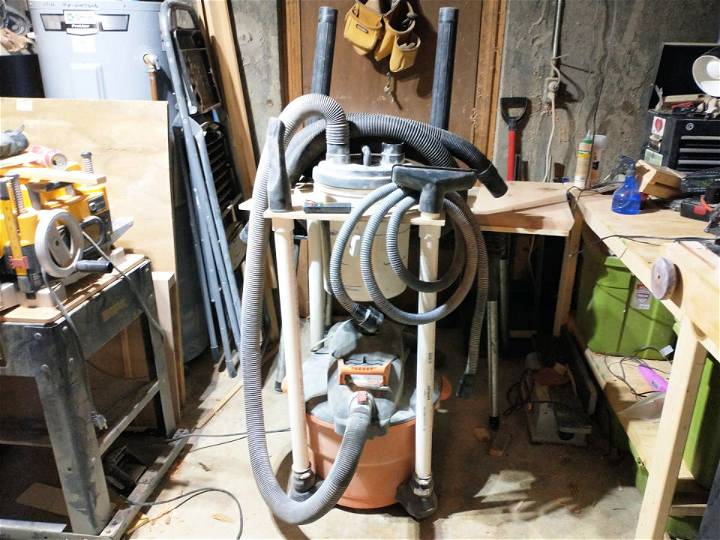
Woodworking enthusiasts know the importance of a clean workspace for both safety and efficiency. Popular Science provides an instructive guide on building a DIY dust collector that can easily attach to your shop vac, saving you time and money. This practical solution helps capture sawdust, protects your lungs, and keeps your shop tidy without the need for an expensive, full-scale dust collection system.
With a clear, step-by-step process and a list of materials, you'll be able to construct a stable, mobile dust separator stand that also conveniently stores all your vacuum attachments. It's a smart, space-saving addition to any workshop, ensuring a cleaner environment for all your woodworking projects.
2. DIY Cyclone Chip Separator for a Dust Collector
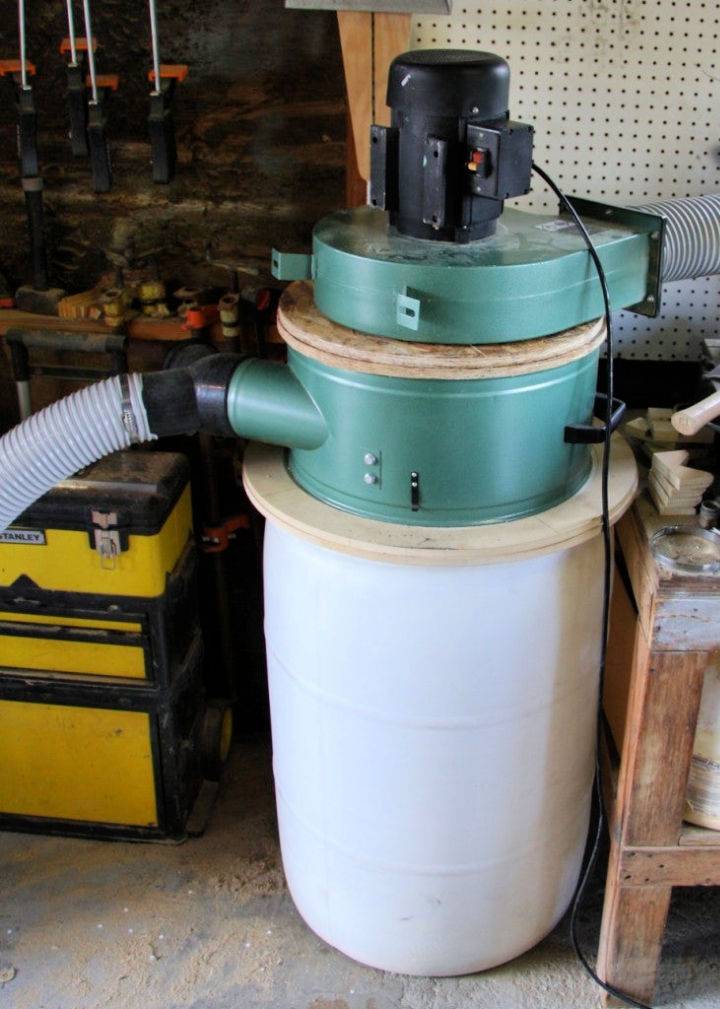
For woodworking enthusiasts aiming to keep their workshop air clean and their health in check, a cyclone chip separator is a smart addition to a dust collector. Instructables provides a comprehensive guide on crafting your own separator, ensuring a tidier space and improved lung protection from airborne particles.
The tutorial outlines a cost-effective method to build a chip-separating baffle, which effectively pre-filters debris before it reaches the main filter, enhancing airflow and efficiency. With detailed steps and practical advice, this guide is a valuable resource for anyone looking to upgrade their dust collection system. Keep your workspace dust-free and your airways clear with this clever DIY project.
3. Homemade Small Dust Collector
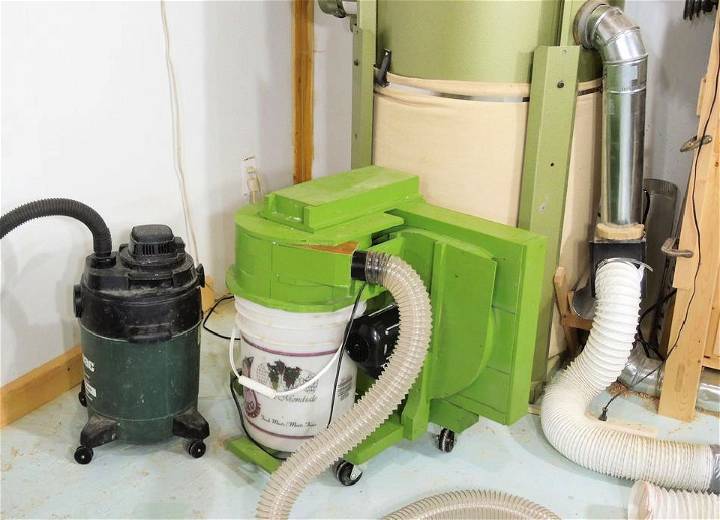
Seeking to build a quieter, more energy-efficient dust collector than a standard shop vac? Our guide on making a small dust collector with a homemade blower offers a practical and engaging walkthrough. With a focus on designing and optimizing a blower using a repurposed motor, the process is full of experimentation and innovation.
You'll learn how to shape and balance an impeller, construct a housing, and understand airflow dynamics. Perfect for DIY enthusiasts, this tutorial is a treasure trove of insights for anyone interested in reducing noise and power consumption in their workshop. Join us in exploring the mechanics of a custom-built dust collector that could transform your space. Woodgears
4. DIY Shop Dust Collection System
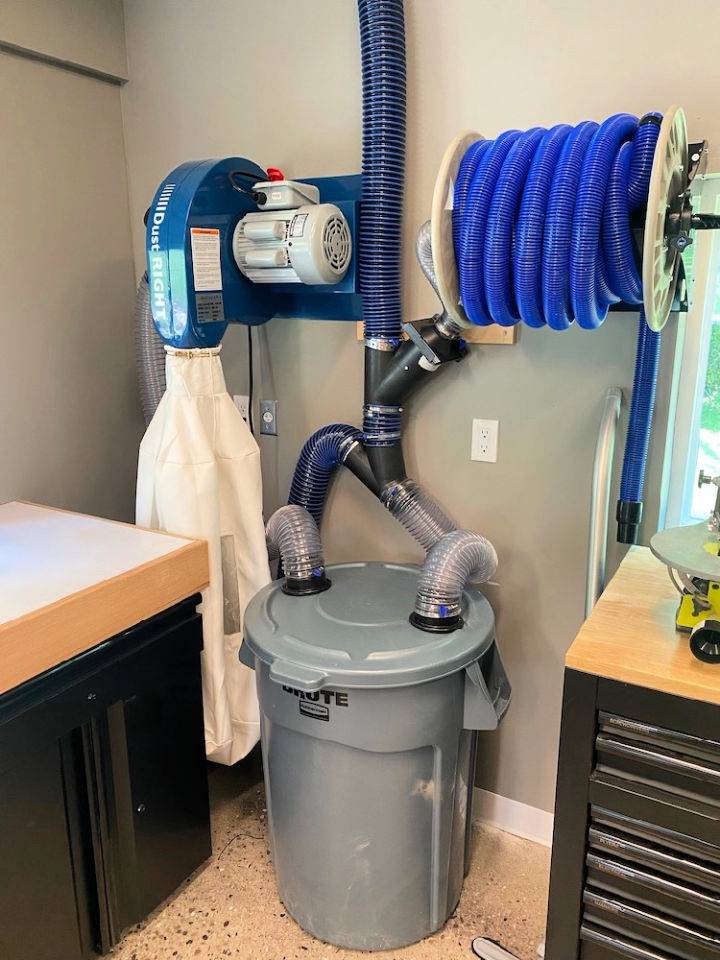
Struggling with sawdust in your workshop? Rogue Engineer's Jamison Rantz shares an insightful guide on setting up a Dust Right unit from Rockler for efficient dust collection. Tailored for medium-sized workshops, this system is not only flexible but also straightforward to install. The post walks you through the creation of a dust separator using a trash can, mounting the wall unit, and plumbing the system with an anti-static duct hose and PVC.
For those who prioritize a clean and healthy workspace, Jamison's step-by-step details offer a practical solution for managing workshop debris. With a remote-controlled dust collector and clever integration of various tools, achieving a dust-free environment has never been easier.
5. Build a 2 Stage Dust Collector
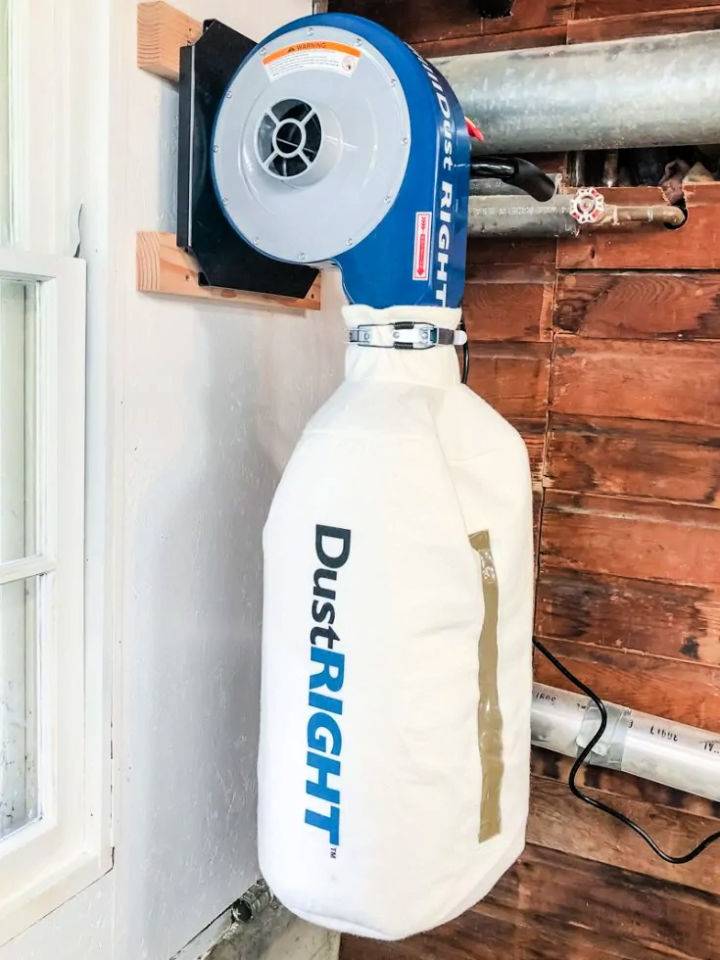
Making a 2-stage dust collector is a smart move for any workshop. It efficiently separates larger debris from finer dust, ensuring your filter stays clean, and your lungs are protected from harmful particles. The Handyman's Daughter provides a thorough guide on transforming a standard dust collector into a more effective system with a simple addition—a cyclone separator and a fine micron filter.
This upgrade not only enhances air quality but also boosts suction power, making your workspace cleaner and safer. With practical tips and a clear list of materials, setting up your enhanced dust collection system can be both straightforward and rewarding.
6. How to Make a Shop Vac Dust Collector
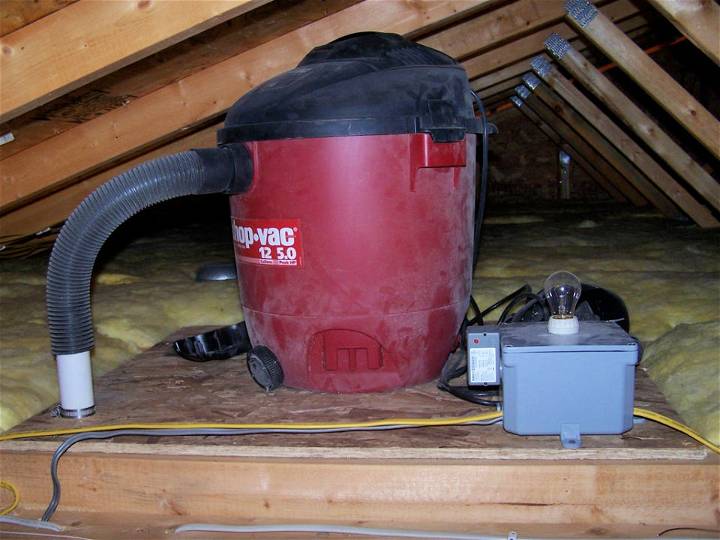
Transform your woodworking shop into a cleaner and more efficient space with a DIY shop vac dust collector. Instructables Offers a practical guide to making a system that minimizes the clutter of 4" hoses and maximizes dust collection capabilities.
Perfect for retirees or hobbyists looking to upgrade their workspace, this project is a smart solution for maintaining a dust-free environment. With clear instructions and helpful tips, you can build a dust collection system that suits your needs without breaking the bank. Keep your focus on crafting beautiful woodwork, and let your custom dust collector handle the cleanup.
7. Making a Cyclone Dust Collector
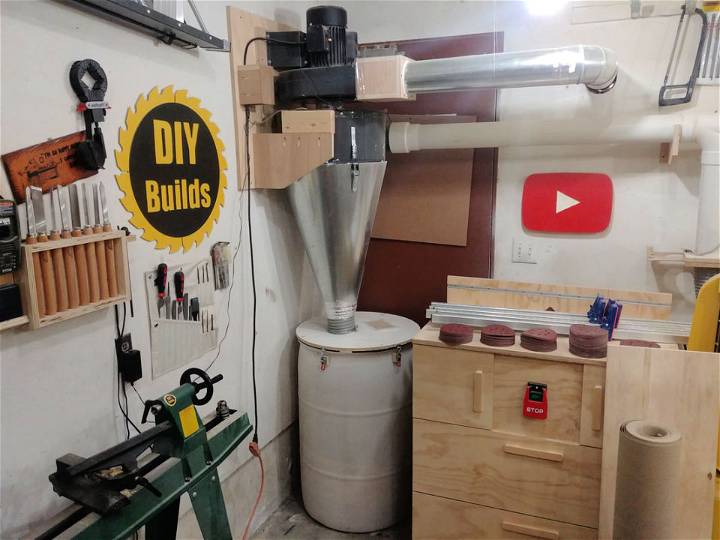
Transform your workshop's dust management with a DIY cyclone dust collector, as detailed on DIY builds. this practical guide takes you through the steps of upgrading a standard 2 hp harbor freight dust collector into an efficient 2-stage cyclone system. With easy-to-follow instructions, you'll learn how to shape and drill sheet metal, apply foil tape for sealing, and make custom wooden supports.
The project also includes tips for integrating a 55-gallon barrel as a dust bin, ensuring a clean workspace. Perfect for woodworkers seeking to enhance their dust collection setup, the website provides plans and a clear walkthrough for a smooth DIY experience. Keep your environment dust-free and your air quality high with this resourceful build.
8. Simple DIY Cyclone Dust Collector
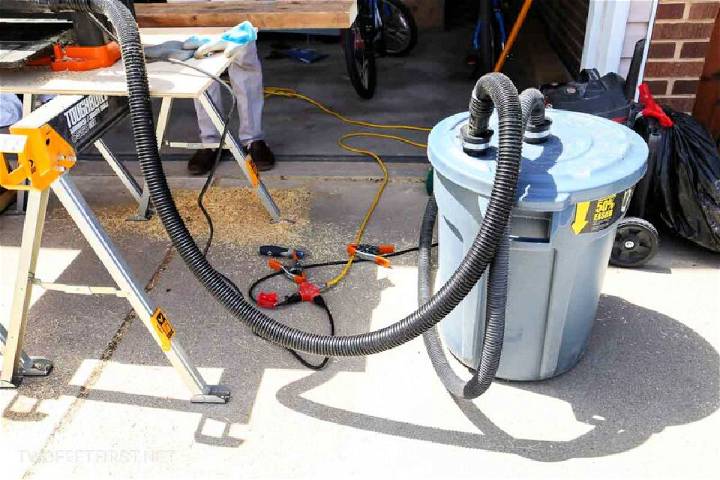
Looking to tackle dust collection in your workshop? Two feet first Offers an instructive guide on making a DIY cyclone dust collector that pairs seamlessly with your shop vacuum. This step-by-step tutorial, inspired by Chris notap's design, is crafted to be engaging and straightforward, ensuring you can follow along with ease.
Using common materials and tools, you can construct an effective system to keep your workspace clean and your lungs clear from sawdust. With clear instructions and a helpful video, this guide is perfect for enhancing your dust management without breaking the bank. Keep your workshop tidy and your air quality in check with this practical DIY project.
9. Easy DIY Dust Collector
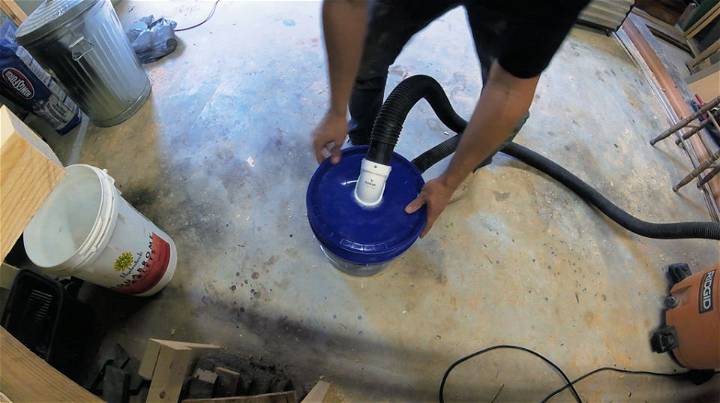
For those keen on reducing dust in their workshops, Instructables Offers a cost-effective and straightforward DIY dust collector guide. This ingenious solution leverages your existing shop vac hose and a few additional, affordable materials. The step-by-step instructions are designed to simplify the process, making it accessible to DIY enthusiasts of all skill levels.
By constructing this dust collector, you not only protect your workspace from dust build-up but also extend the life of your shop vac's filter. The guide is engaging and helpful, providing a practical approach to maintaining a cleaner and more efficient work environment.
10. How to Install a Dust Collection System
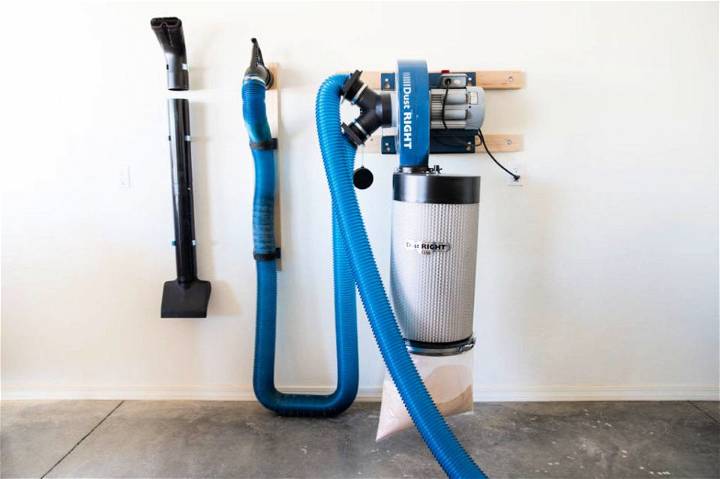
Installing a dust collection system in your workshop can significantly improve cleanliness and efficiency. Addicted 2 DIY provides a comprehensive guide that simplifies the process, making it accessible and cost-effective.
From selecting the right Dust RIGHT 1250cfm collector to setting up hoses and fittings, this tutorial covers all the essentials. Learn to mount the dust collector, install the canister filter, and arrange tools for optimal productivity. With clear, engaging instructions, you'll be on your way to a cleaner workspace that supports your passion for woodworking.
11. Building a Dust Wood Chip Collector
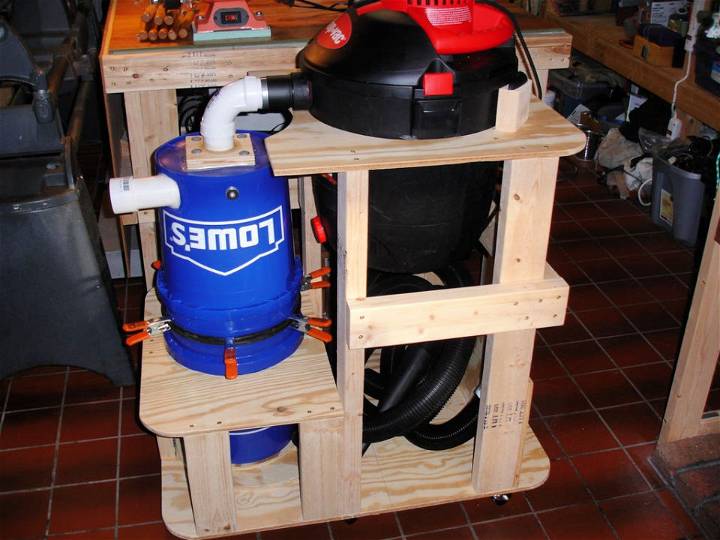
Looking to tackle dust and wood chip accumulation in your workshop? Instructables offers a practical guide on making a DIY dust/wood chip collector with minimal fuss. This project is perfect for those who enjoy woodworking and want to maintain a clean space.
Using two buckets, a short length of PVC pipe, some clamps, and a few common garage scraps, you can craft an effective cyclonic dust separator. Simple cutting and assembly mean you can have this handy tool up and running in no time, helping to keep your shop air cleaner and your work surfaces clear.
12. DIY Dust Collection for Small Shop
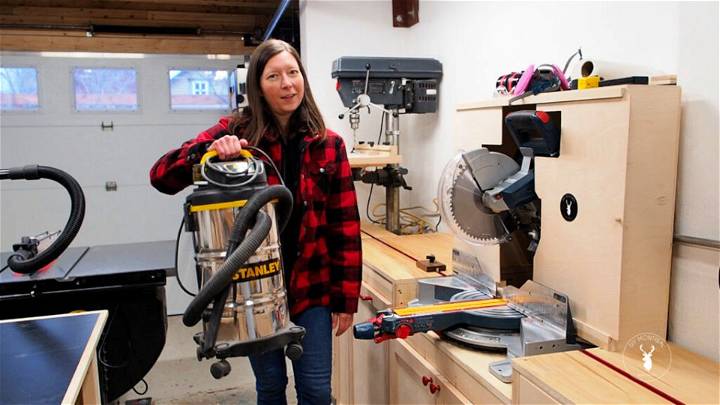
Dust collection in a small shop is crucial for maintaining a clean environment and protecting your health. Our guide offers practical solutions for effective dust management, from upgrading your shop vac with a HEPA filter to implementing a dust cyclone system.
Discover how overhead air filtration units and dust collectors can enhance your workspace, and why a reusable dust mask is an essential investment. With a focus on safety and efficiency, our tips help you make a dust-free zone, even in compact spaces. Keep your lungs clear and your shop pristine with these dust collection strategies. diy montreal
13. Homemade Compact Dust Collector
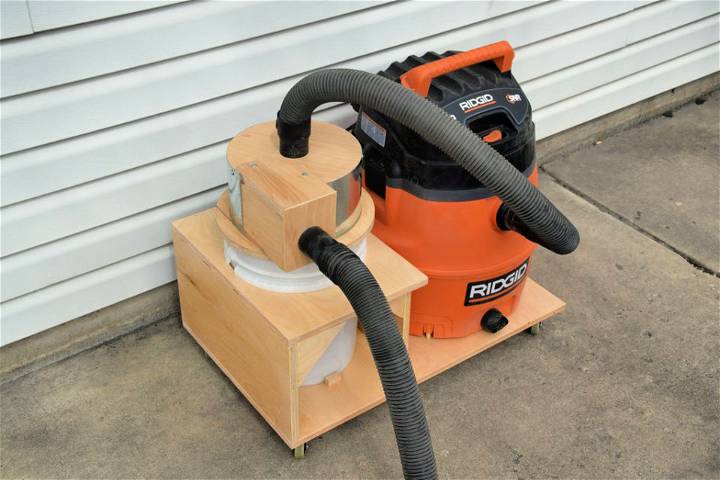
Tired of the mess from emptying your shop vac? Instructables presents a compact dust collector DIY guide that will transform cleanup in your workshop. This step-by-step tutorial walks you through making a Thien baffle style dust collector, designed to fit snugly under a table saw in a small garage shop.
With no need for bags or filters, this efficient system makes emptying a breeze, ensuring your workspace stays clean with minimal fuss. Ideal for woodworking enthusiasts, the guide provides a detailed list of materials, tool requirements, and clear instructions for assembly. Enhance your shop's dust management today with this practical and space-saving solution.
14. Making a Dust Collection on a Budget
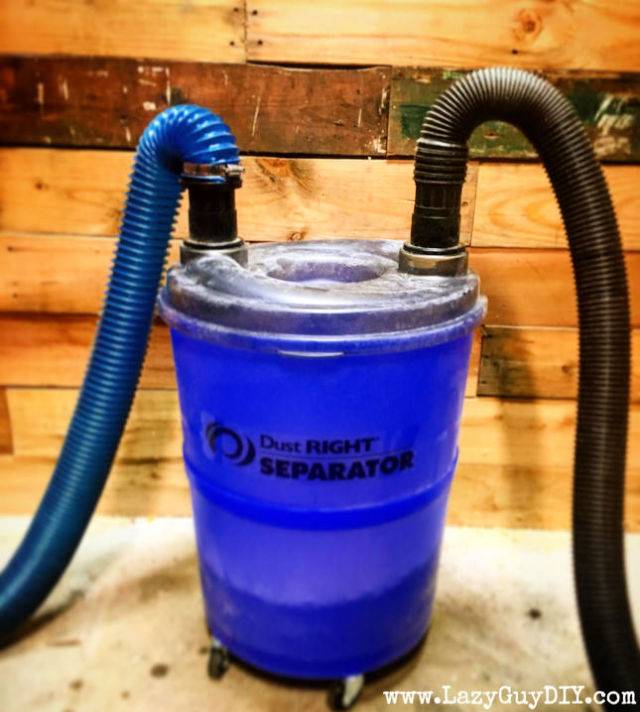
Struggling with dust in your woodworking shop? Lazy Guy DIY Introduces the rockler dust right series, a budget-friendly solution to keep your workspace clean and your lungs healthy. The dust right dust separator and clear hose kit transform your regular shop vac into a powerful dust collection system.
For just over $100, you can enhance suction, simplify debris disposal, and enjoy cleaner air. It's a smart investment that keeps your shop tidy without breaking the bank. Keep your workspace dust-free and efficient with Rockler's ingenious dust collection accessories.
15. DIY Cyclone Dust Collector System
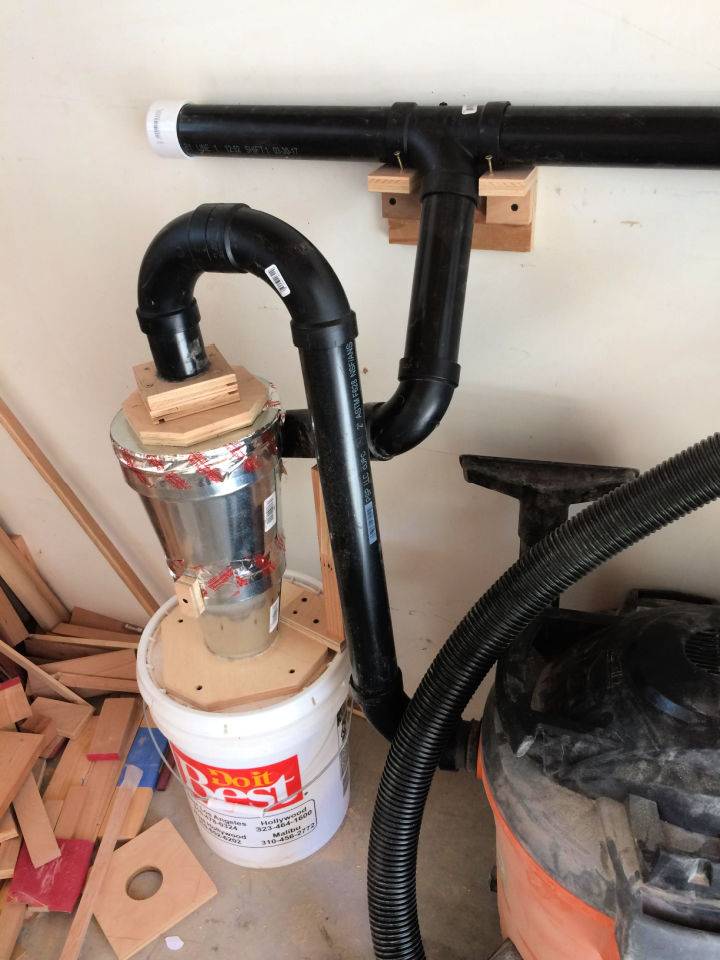
Making a DIY cyclone dust collector system is a smart move for woodworking enthusiasts who want to maintain a clean and efficient workspace. By integrating a cyclone into your dust collection setup, you can significantly reduce the amount of debris clogging your shop vac's filter. This not only enhances the vacuum's performance but also extends its life, allowing you to work uninterrupted for hours.
Imgur offers a glimpse into one user's successful implementation of such a system, showing impressive results after a month of use. For woodworkers looking to build a cost-effective and reliable dust management solution, constructing a homemade cyclone dust collector is a practical project worth considering. imgur
16. Make Your Own Dust Collector
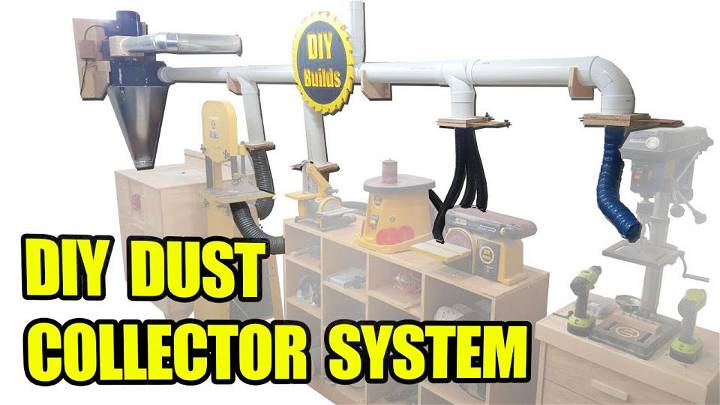
Transform your workshop's dust management with the DIY dust collector system from DIY Builds. This innovative setup is centered around a modified harbor freight dust collector, enhanced to function as a cyclone separator with an integrated low-voltage relay and switch system. The system automatically activates the collector when a blast gate opens, ensuring efficient dust collection from multiple tools, including a router table, band saw, sanders, and more.
Detailed instructions guide you through the process of making airtight connections with PVC cement, cutting precise fittings with a miter saw, and installing a convenient 24VDC relay for dust-free circuit control. With clear, step-by-step guidance and practical tips, DIY Builds empowers you to build a robust dust collection system that keeps your workspace clean and your air quality high.
17. DIY Harbor Freight Dust Collector Mod
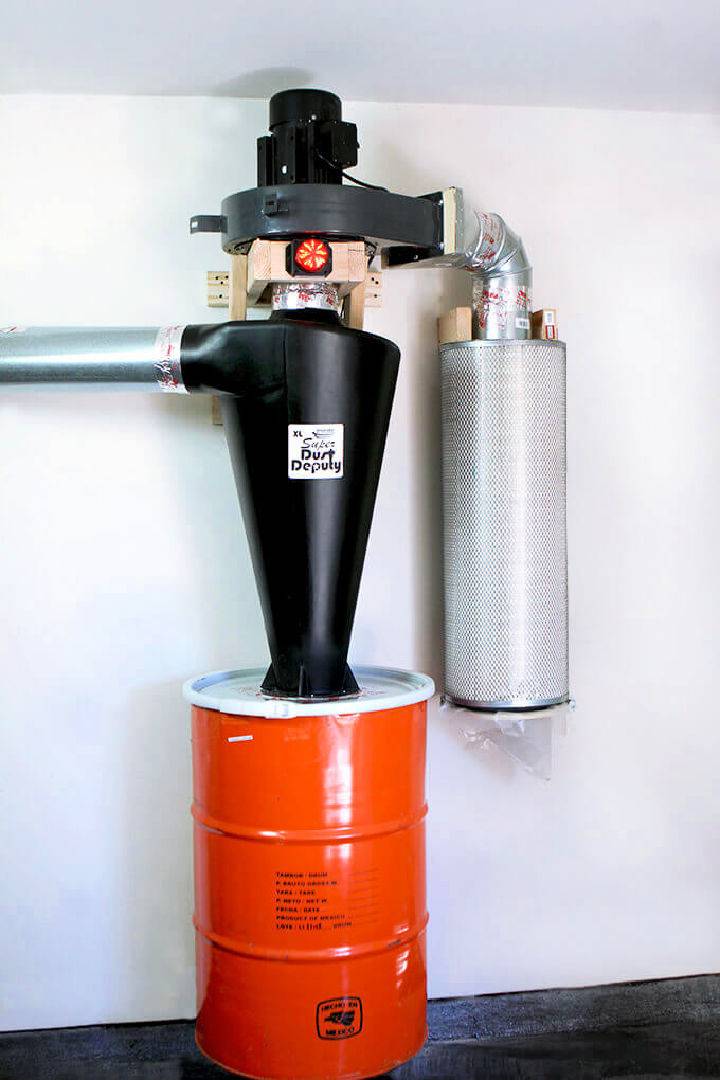
Upgrade your woodworking shop's dust collection system with an informative guide from Gray House Studio. In this detailed tutorial, Brent demonstrates the transformation of a standard Harbor Freight Dust Collector into a high-efficiency unit using the Super Dust Deputy XL from Oneida Air Systems. Discover practical steps to increase your dust collector's power, enabling it to handle multiple tools and keep your workspace clean.
Learn how to modify the impeller, adapt the filter, and install a cyclone separator for superior dust management. Ideal for woodworkers seeking to enhance their shop environment, this guide provides clear instructions and helpful tips to make dust collection more effective and less intrusive.
18. How to Make a Dust Collector
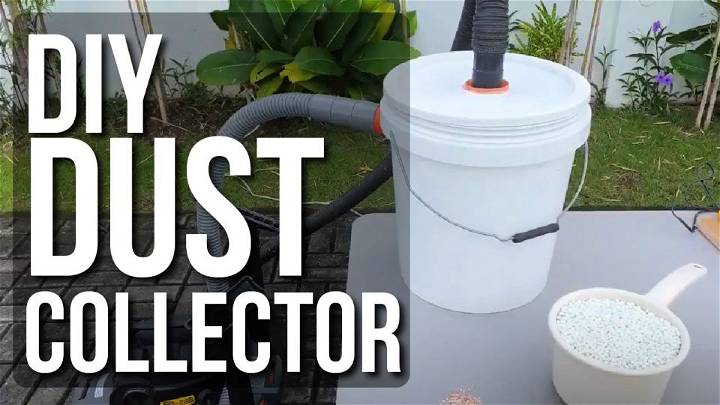
Embarking on a DIY dust collector project can be a rewarding experience, especially when you have a clear guide to help you through the process. In this instructive video on YouTube, Vinchero Karpintero shares his journey of making a homemade dust collector. This video is an excellent resource for anyone interested in DIY woodworking projects and looking to improve their workshop's cleanliness and air quality.
The step-by-step tutorial is engaging and easy to understand, making it suitable for DIY enthusiasts who want to tackle dust management effectively. The demonstration includes testing with foam balls, offering viewers a visual understanding of the dust collector's efficiency. With practical tips and a straightforward approach, you'll learn how to assemble your dust collector, ensuring a cleaner workspace for your future projects. Visit YouTube and search for "DIY Dust Collector Project" by Vinchero Karpintero to get started on your dust-free workshop journey.
19. DIY Cyclone Dust Collector
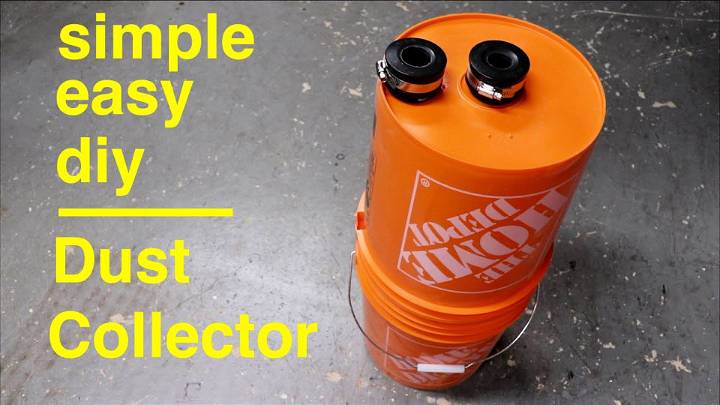
Discover the simplicity of making a highly efficient cyclone dust collector for your workshop with minimal effort and cost. Utilizing two common Home Depot buckets and a few plumbing parts like straight couplers and elbow fittings, this guide lays out a straightforward process to build a dust separation system that enhances your shop vac's performance.
Perfect for keeping your workspace clean without the need for complex baffle designs, this DIY project ensures a dust-free environment, prolonging the life of your vacuum filter. Embrace a cleaner workshop with this easy-to-follow, inventive solution that promises a significant reduction in sawdust and debris.
20. Cheap DIY Cyclone Dust Collector
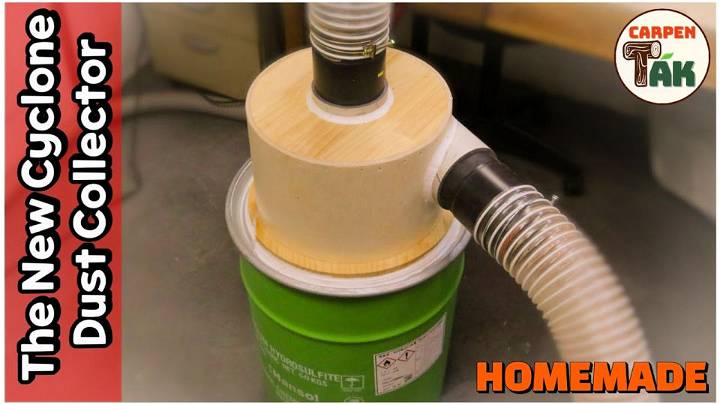
Discover how to make a highly efficient cyclone dust collector with this engaging DIY video on YouTube. Perfect for small woodworking shops, this homemade solution promises impressive performance without the need for costly equipment. The video takes you step by step through the process, making it easy to follow and apply in your own workspace.
Learn from CarpenTAK, a skilled Korean craftsman, as he shares his expertise and innovative woodworking tools and jigs. Enhance your dust management system and keep your shop clean and safe by crafting your own cyclone dust collector. For more woodworking tips and project ideas, explore the channel's rich content library. youtube
21. Creative Dust Cyclone for Under $2
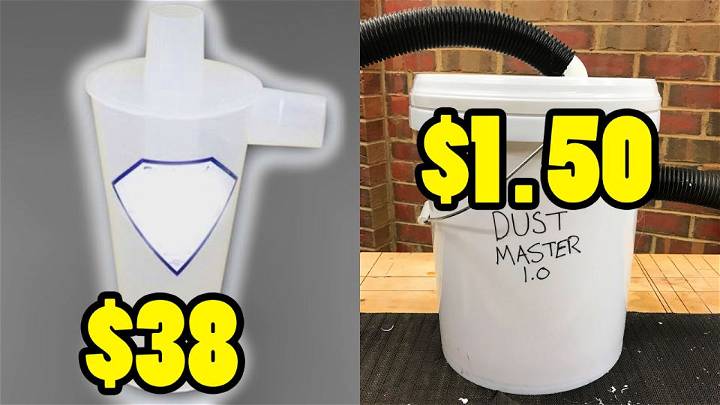
Discover the art of crafting a highly efficient dust cyclone for your workshop at a fraction of the cost! This ingenious DIY project transforms a simple paint bucket and two 45-degree angle PVC pipes into a powerful dust collection system with an impressive 97% efficiency.
All you need is a drill, a glue gun (or silicone for sealing), and a bit of creativity. Perfect for woodworkers looking to keep their space clean without breaking the bank, this guide offers a straightforward method to build a cyclone dust collector. It demonstrates that with a little ingenuity, achieving a cleaner workshop is both affordable and satisfying.
22. How to Make Dust Collector With a Pressure Release Valve
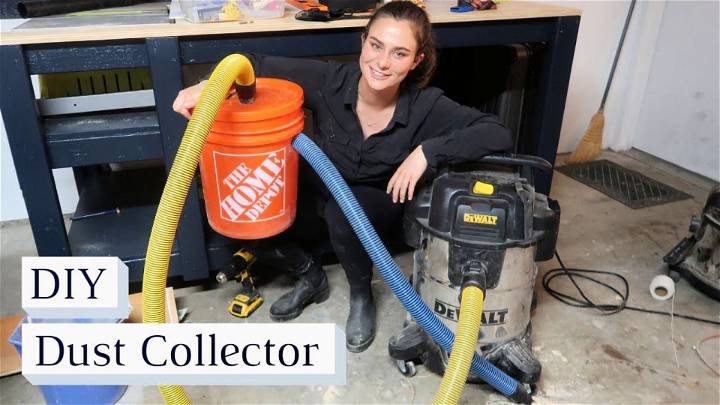
Craft your own efficient dust collector with a clever twist: a pressure release valve, using common household items and basic tools. This inventive DIY project is perfect for woodworking enthusiasts aiming to extend the life of their shop vac's filter.
By attaching a vacuum hose to a bucket and implementing a unique circulation system, sawdust is trapped at the bottom, keeping the air clean and your equipment running smoothly. The addition of a homemade pressure release valve ensures optimal performance, preventing suction loss. Follow this guide to make a cost-effective solution for a cleaner, more efficient workspace, enhancing your crafting experience.
23. Easy DIY Cyclone Dust Collector
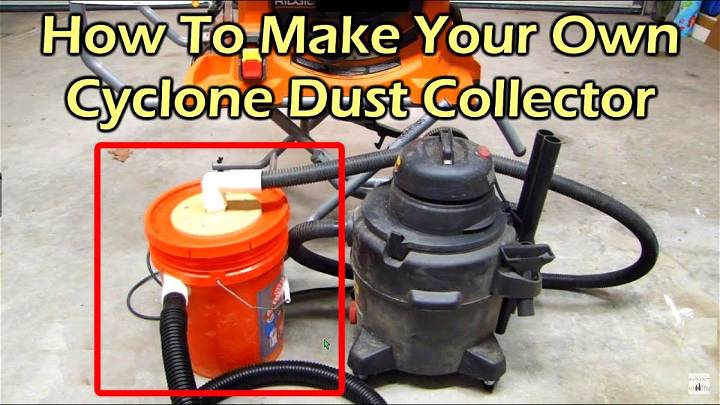
Upgrade your workshop's cleanliness and efficiency with a homemade cyclone dust collector! This innovative guide walks you through making a powerful dust collection system for your shop vacuum, using affordable materials like PVC pipe, a Home Depot bucket, and a few tools.
By connecting this device between your shop vac and table saw, you'll prevent sawdust from clogging the filter, saving time and maintenance costs. With an investment of around $35, compared to commercial options costing up to $100, this DIY project is not only cost-effective but also enhances your workshop's functionality and cleanliness. Perfect for woodworking enthusiasts seeking a tidy and efficient workspace!
24. Easy to Make Dust Collector
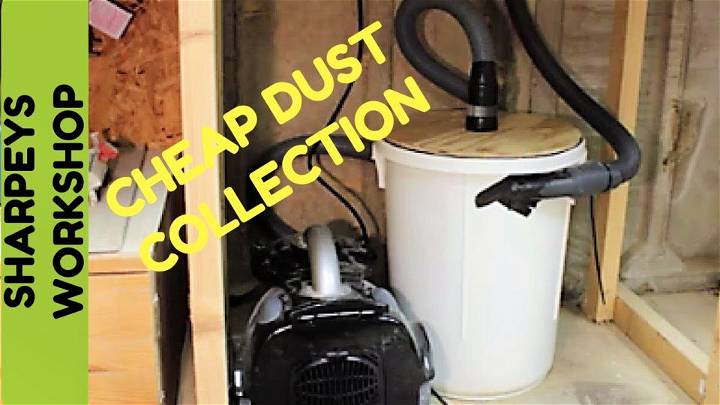
Craft an efficient and budget-friendly DIY dust collector with everyday items, revolutionizing your workspace's cleanliness. This ingenious setup combines a low-cost vacuum cleaner and a plasterer's bucket to capture miter saw dust effectively. A homemade lid from plywood ensures a snug fit, while modifications with PVC tape make airtight connections, enhancing suction.
For under $15, this compact solution fits neatly under workbenches, significantly reducing airborne particles. Follow these creative steps to assemble your own dust management system, improving air quality and workshop tidiness without breaking the bank. Perfect for DIY enthusiasts seeking practical, cost-effective improvements.
25. Dust Collector in Less Than 20 Minutes With a Bucket
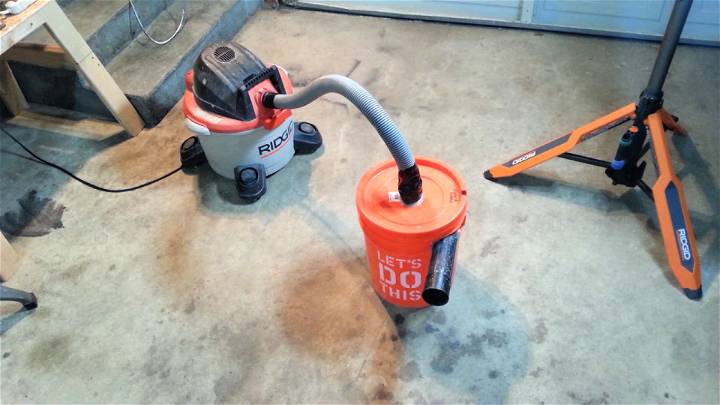
Craft a highly efficient DIY Dust Collector/Separator in less than 20 minutes using just a bucket, spare vacuum parts, and simple tools like a hot glue gun. This innovative setup, perfect for woodworking enthusiasts, drastically reduces dust in your workspace. By cutting and attaching vacuum hose extensions to a bucket, this homemade cyclone dust separator efficiently captures 99% of sawdust, sparing your vacuum filter.
Essential materials include a bucket with a lid, vacuum hose, and duct tape, making it a cost-effective solution. Follow this easy guide to protect your equipment and maintain a cleaner workshop environment, leveraging items you likely already have at home.
Conclusion:
In conclusion, crafting your homemade DIY dust collector is not just a practical project for maintaining a cleaner workshop but also an engaging way to apply your DIY skills. From gathering materials to following through with the step-by-step guide, and finally testing your cyclone dust collector, each phase brings you closer to achieving a more efficient and cleaner workspace.
For those who've pondered the effectiveness of a DIY version compared to commercial options or have questions about customization, this article has aimed to address those queries comprehensively. Remember, implementing a dust collector promises not only to enhance the air quality of your workspace but also to contribute significantly to your overall woodworking experience. So, why wait? Start planning and building your DIY dust collector today for a tidier, healthier workshop environment.


